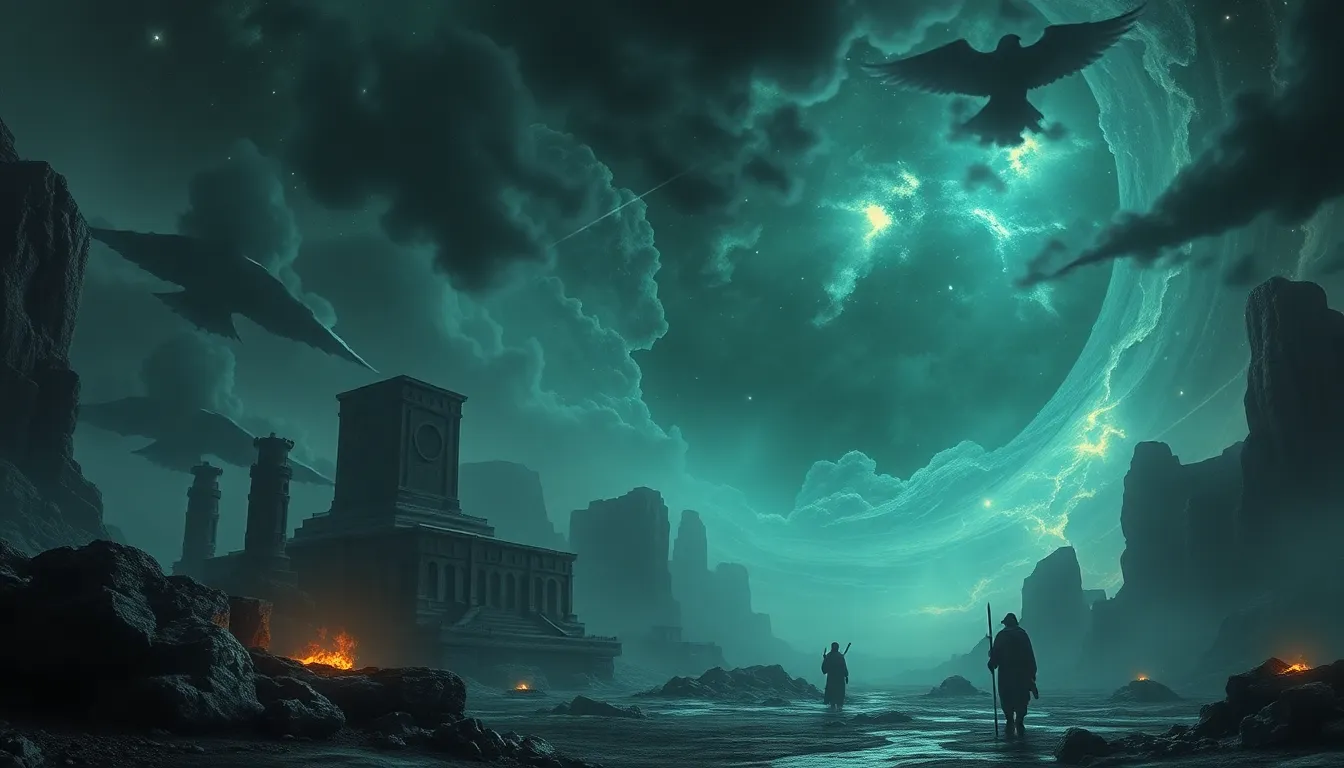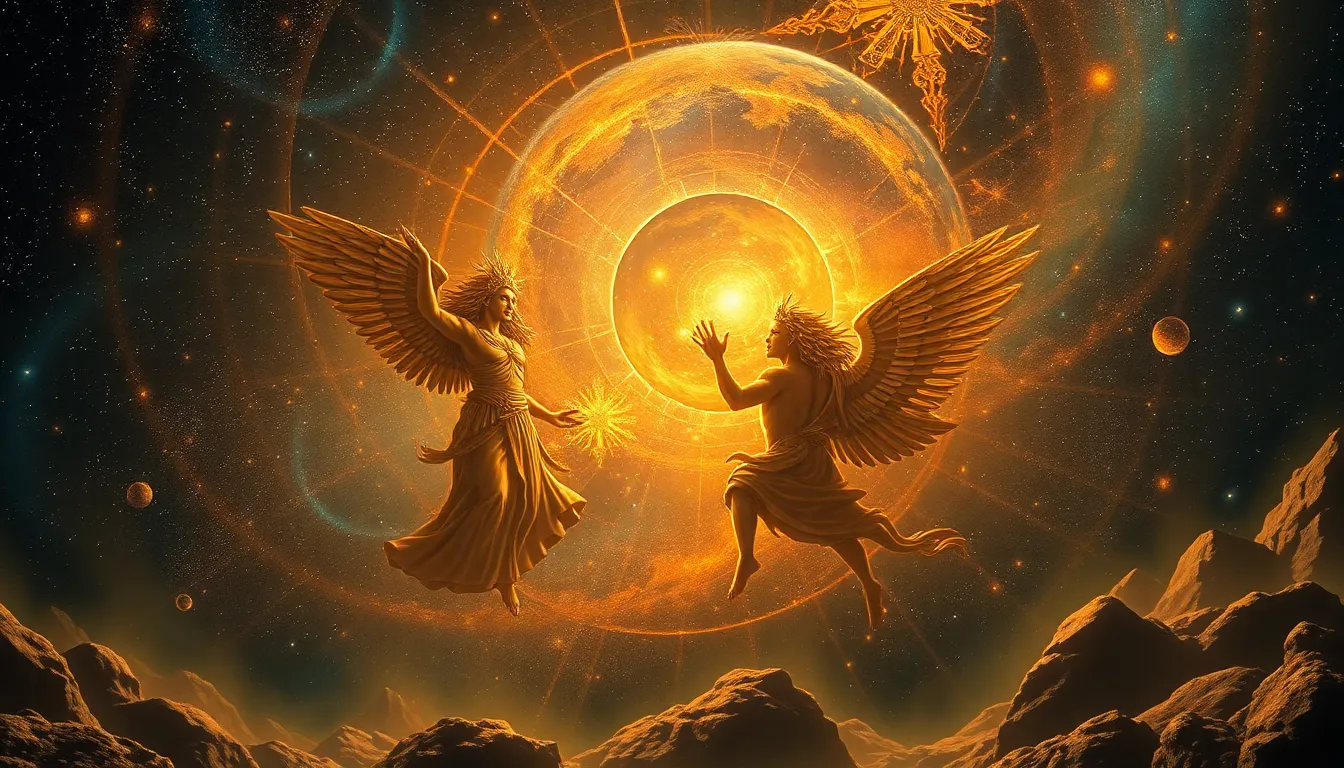The Most Intriguing Apocalyptic Myths from Ancient Civilizations
Introduction: The Allure of Apocalyptic Myths
Apocalyptic myths have captivated human imagination for millennia, providing insights into the belief systems and fears of ancient civilizations. These narratives often describe cataclysmic events that lead to the end of the world or significant transformations of society. They serve as cautionary tales, moral lessons, or reflections of the human condition, illustrating the struggle between chaos and order.
Common themes in apocalyptic myths include divine retribution, the cyclical nature of life, and the promise of rebirth. They frequently involve floods, wars, and cosmic battles between good and evil, resonating with existential questions about humanity’s place in the universe and the fate that awaits us all.
The Sumerian Flood: The Epic of Gilgamesh
One of the earliest recorded apocalyptic myths is found in the Sumerian epic, “The Epic of Gilgamesh.” This tale recounts a great flood sent by the gods to destroy humanity, paralleling the biblical story of Noah’s Ark. In the epic, the character Utnapishtim is forewarned of the flood and builds a massive boat to save his family and various species of animals.
This myth not only serves as a narrative of survival but also symbolizes the fragility of human existence. The flood represents a cleansing force, removing the wicked from the earth and allowing for a fresh start. The similarities between this and other flood myths across cultures suggest a shared human experience of catastrophic events and the need for renewal.
The Mayan Calendar and the End of Days
The Mayans developed a complex calendar system, including the long count calendar, which tracks vast cycles of time. This calendar led to widespread speculation about the end of an era, particularly the year 2012, which many believed signified an impending apocalypse. The 2012 phenomenon sparked cultural fascination and fears of cataclysmic events.
However, rather than indicating an end, the Mayan worldview embraced the idea of cycles and rebirth. The conclusion of one cycle would simply usher in another, reflecting a belief in the interconnectedness of life and the universe. The Mayan myths emphasize transformation and the importance of understanding the natural rhythms of existence.
Norse Ragnarök: The Twilight of the Gods
In Norse mythology, Ragnarök is the prophesied end of the world, marked by a series of catastrophic events, including a great battle between gods and giants. Key figures such as Odin, Thor, and Loki play pivotal roles in these events, culminating in the death of many gods and the submergence of the world in water.
The aftermath of Ragnarök is not merely destruction; it is followed by rebirth and renewal, where the world rises anew, fertile and populated by the surviving gods and humans. This cyclical destruction and rebirth reflect Norse beliefs about the impermanence of life and the inevitability of change.
Hindu Cycles of Time: The Kali Yuga
Hindu cosmology presents a cyclical view of time divided into four epochs, known as yugas. The current age, Kali Yuga, is characterized by moral decline, chaos, and suffering. It is believed to be the darkest age, marked by the loss of virtue and the dominance of ignorance.
Despite the challenges of Kali Yuga, Hindu texts promise a renewal. The eventual arrival of Kalki, the future avatar of Vishnu, signifies the restoration of dharma (cosmic order) and the end of chaos. This belief in cyclical time and the hope for eventual renewal provide a comforting perspective on human struggles.
Zoroastrian Eschatology: The Battle Between Good and Evil
Zoroastrianism presents a dualistic view of the world, emphasizing the eternal struggle between Ahura Mazda, the god of light and goodness, and Angra Mainyu, the spirit of darkness and chaos. Zoroastrian eschatology describes a final battle between these forces, culminating in the concept of Frashokereti, where good ultimately triumphs over evil.
In this belief system, the end of the world is not a mere catastrophic event but a transformative process leading to the purification of the earth. The resurrection of the dead and the establishment of a new world free from evil reflect the hope for ultimate justice and harmony.
Ancient Egyptian Views on Afterlife and Catastrophe
The ancient Egyptians had a profound belief in the afterlife and the cosmic balance maintained by the goddess Ma’at. The sun god Ra was central to their cosmology, and his nightly journey through the underworld represented the cyclical nature of life and death.
Egyptian mythology also encompassed apocalyptic themes, such as the potential chaos that could ensue if Ma’at’s order was disrupted. The myth of Ra battling the serpent Apophis illustrates the constant struggle against chaos and the importance of harmony in the universe. The Egyptians viewed death not as an end but as a transition, emphasizing the continuity of existence beyond the physical realm.
Mesoamerican Myths: The Five Suns and World Destruction
The Mesoamerican civilizations, particularly the Aztecs, believed in a cyclical pattern of creation and destruction known as the myth of the Five Suns. According to this myth, the world had been created and destroyed four times before the current age, each time under a different sun.
The Aztecs believed that the fifth sun, our current world, would eventually face its own destruction. This cyclical belief in the renewal of life was closely tied to rituals and sacrifices, which were seen as essential to appeasing the gods and averting apocalyptic scenarios. The importance of sacrifice highlights the interconnectedness of life, death, and rebirth in Mesoamerican cosmology.
Greco-Roman Myths: The Destruction of Humanity
In Greco-Roman mythology, the myth of Prometheus serves as a poignant narrative of human suffering and divine retribution. Prometheus, a titan, defies the gods by stealing fire and giving it to humanity, which leads to his punishment by Zeus. This act of defiance is often interpreted as a symbol of human progress and the consequences of overreaching.
The punishment of Prometheus and the suffering of humanity reflect themes of hubris, moral lessons, and the potential for destruction that can arise from human actions. These myths serve as cautionary tales about the relationship between humanity and the divine, underscoring the delicate balance between creation and destruction.



